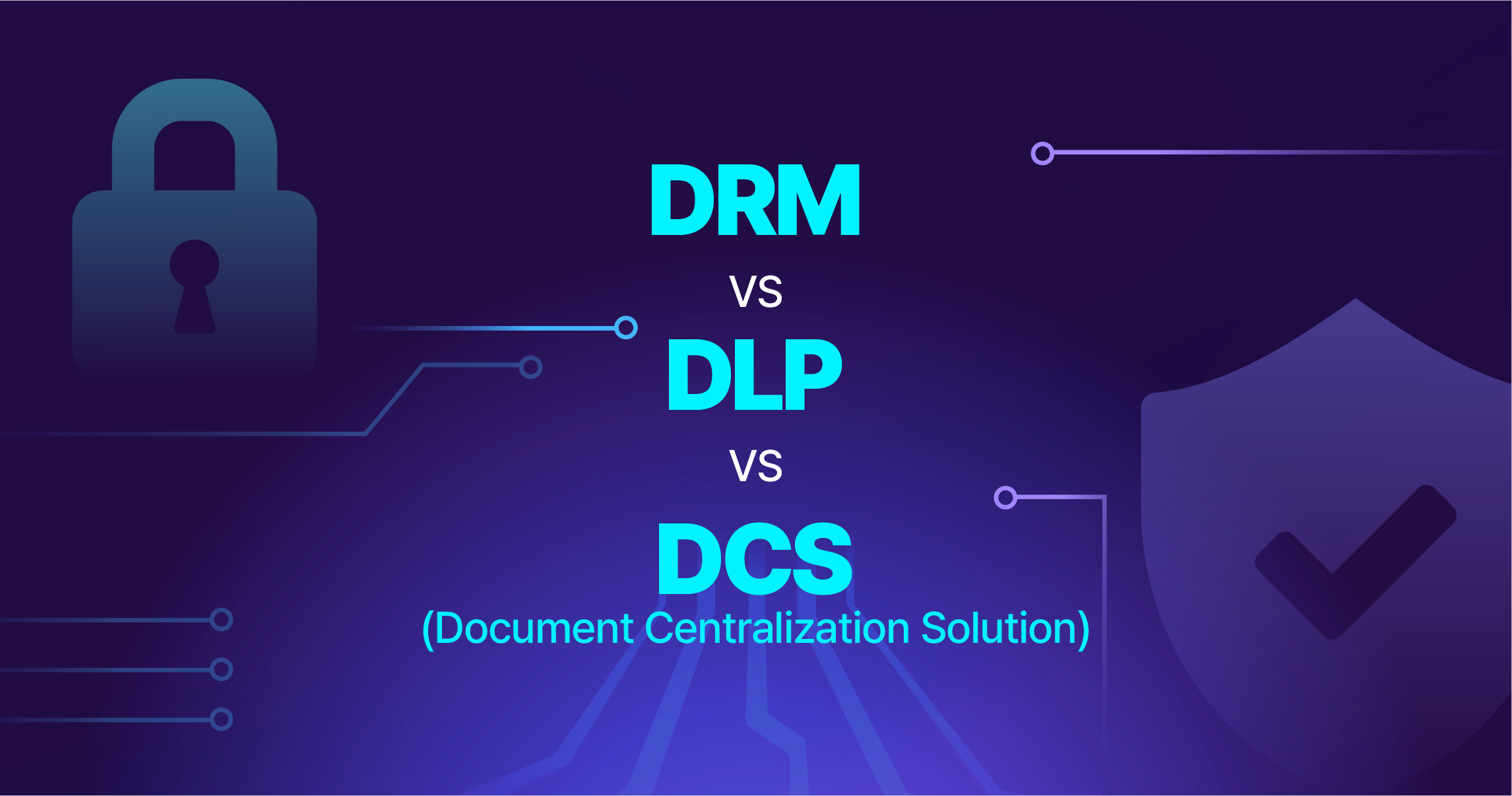
Hello, this is Cyberdigm.
Nowadays, you may often come across with news about security breaches. While external threats are certainly a concern for all organizations, a significant portion of data leaks actually originate from within organizations.
To prevent such incidents, many companies are exploring security solutions such as DRM, DLP, and DCS (Document Centralization Solution).
In this article, we have come up with a comparison of these three solutions and a detailed explanation on the reasons why DCS is emerging as the most practical and optimal option.
DRM vs DLP vs DCS: What are the differences?
- DRM (Digital Rights Management)
DRM encrypts document files stored on individual PCs or any devices in order to restrict unauthorized access or modification. This helps prevent illegal copying or unauthorized distribution.
However, DRM solutions often come with high implementation costs. The encryption and decryption processes can slow down daily operations, and once a document is decrypted, it becomes difficult to track, making it challenging to respond effectively in the event of a data breach.
- DLP (Data Loss Prevention)
DLP solutions are designed to prevent data from being leaked through various channels within the organization, including individual PCs.
They monitor data movement in real time and detect policy violations based on predefined rules, either blocking suspicious activity or issuing alerts to prevent leaks before they occur.
Despite this, DLP also has limitations—tracking data after a leak is difficult, and it cannot fundamentally control local storage, leaving organizations exposed to risks.
- DCS (Document Centralization Solution)
DCS guides users to save and preserve all documents only at a central server, disallowing document savings at local PCs. In other words, it creates a centralized control over the entire document lifecycle—from creation, storage, usage and sharing.
By entirely disallowing local storage and enabling access control and usage history tracking from the central server, DCS offers a more fundamental and proactive way to prevent data breaches.
Reasons why Organizations choose Cyberdigm’s DCS
Ultimately, the key to preventing data breaches is directly related to how documents are stored and managed.
DCS transforms documents into managed assets, enhancing not only the security level, but also operational efficiency and collaboration productivity.
1. Asset Management – Systematic Collection and Preservation of Corporate Documents
- All documents are automatically collected and stored at the central server, eliminating local storage and securely turning business-critical data into corporate assets.
- Even in the event of unexpected incidents like PC failure or formatting, files can be restored from the centrally-stored original documents.
- With upcoming Cyberdigm’s LLM and AI technologies, accumulated document data can be searched semantically and delivered in a form tailored to the user's intentions.
2. Security – From Data Loss Prevention to a Safe Document Environment
- Granular access controls by user, department, or position disallow unauthorized viewing and prevent data leakage at the source.
- All actions—viewing, editing, copying, printing—are to be logged for complete auditability and post-incident traceability.
- Documents shared externally can be further protected with download expiration settings or administrator approval requirements.
3. Collaboration – Building an Efficient Co-Editing Environment
- The Windows Explorer-based interface is provided for user convenience.
- System keeps track of document versions, allowing users to track and restore previous versions easily, preventing overwrites and version conflicts.
- Once a document is shared within teams, there is no need to further share different versions, enabling seamless and efficient work collaborations.
Unexpected Security Threats: Cyberdigm’s DCS is the Key
Common Security Issues in the Workplace — How Can Cyberdigm’s DCS Help?
① Document Leaks from Former Employees or Affiliates
When any data or documents are saved at a leaving employee’s PC, they can easily be leaked externally—potentially exposing sensitive technical data or client information.
Similarly, when sharing files with outsourced parties, failure to properly retrieve those files can lead to serious security vulnerabilities.
👉 Cyberdigm’s Document Centralization enforces all documents to be stored only at a central server, not at individual PCs or local drives
Once a user account is deactivated (e.g., after resignation), access is immediately terminated, leaving zero possibility of data leakage with no files saved at local PCs.
② Physical Data Leaks Despite Network Separation
While network separation (air-gapping) aims to block external intrusions by isolating internal and external networks, actual leaks often occur internally—via print-outs, screen capture, or external storage devices like USBs.
👉 Cyberdigm’s solution provides granular access control at the document level. It restricts print-out and use of external storage devices, while keeping track of full activity logs—minimizing
the risk of physical leaks even in a network-separated environment.
③ Lack of IT Personnel in SMB segment
Even when security solutions are introduced, small and mid-sized businesses often struggle with setup, management, and maintenance—resulting in low adoption rate and potential security blind spots.
👉 Cyberdigm offers both on-premise and cloud-based models, resulting in diverse types of implementation paths for all types of organizations.
Even companies without dedicated IT personnel can easily manage the system with minimal burden.
We’ve explored the differences between DRM, DLP and DCS—and why DCS is rapidly being concerned as an essential solution for enterprises and organizations.
With Cyberdigm’s Document Centralization Solution, you can build a safer and more efficient work environment for your organization.

 한국어
한국어







